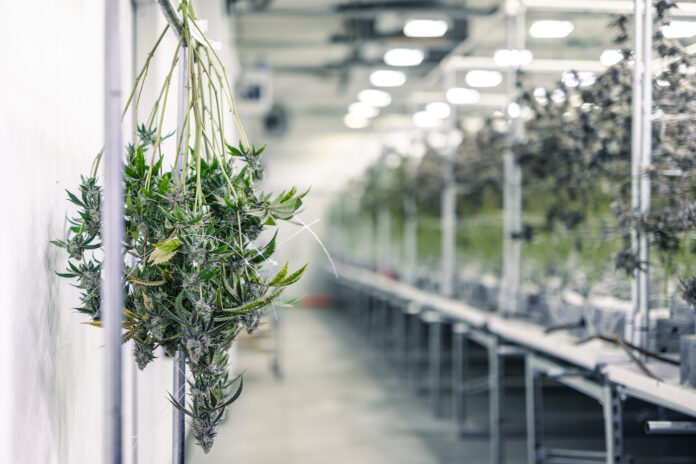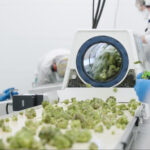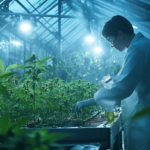When people talk about improving the quality of flower, the discussion is dominated by everything that happens before the harvest. Lighting, soil types, nutrients, pH, and a myriad of other inputs play a critical role in the development of a cannabis plant, but the quest for quality is far from over when the blade cuts through the stem on an outdoor farm in October. While it’s important to have healthy plants grown to their highest potential and potency, not putting enough planning and time into the post-harvest processes is a missed opportunity.
Cannabis Drying 101
The tried-and-true process cultivators have used for centuries is the hang-drying method. Freshly harvested cannabis plants are typically hung upside down from strings or wires in an environmentally controlled drying space with a humidity level near 62 percent until the buds are dry enough for processing. Deciding between dry trimming and wet trimming depends on many factors, with personal preference often leading the way. During the drying process, which can take up to two weeks, aromas and flavors intensify as the moisture dissipates. Drying also reduces the chance of fungal growth, which can occur quickly in moist buds left in a dark place without airflow.
According to the longtime cultivator, author, and educator Ed Rosenthal, “For buds to be proud of, think ‘low and slow.’ Drying and curing flowers takes time and patience, but the finished buds are worth the wait.”
When buds are dried too fast through the use of dehumidifiers to pull moisture out in a couple of days, the final product is usually lacking in flavor and aroma. While Rosenthal and many other experienced legacy cultivators believe patience is the path to success, others see time as a costly enemy they can overcome with the right technological solution.
How to dry cannabis fast
While there are a number of methods to speed up the drying process by focusing on temperature and humidity, one of the most popular ways to eliminate moisture while retaining a marijuana plant’s finer qualities is freeze-drying.
“The strategy is to take fresh cannabis, freeze it, and then dry the frozen plant material,” said Dominic Daigle, chief executive officer at Cannabista, a cannabis post-harvest processor. Cannabista has a 40,000-square-foot facility in Quebec, Canada that can process 150 tons of product annually.
The company’s drying machines are based on the concept of lyophilization, which uses a low-temperature dehydration and sublimation process.
“We use the principles of sublimation to remove the moisture from frozen plant material,” said Daigle. “This preserves the physical appearance, the terpenes, the trichomes are fully intact, and the taste is smooth.”
This approach to post-harvest processing brings many benefits to the bottom line as well. For instance, if an outdoor cultivator is sitting on a large harvest without the capacity to dry it all, the speed at which this drying technology works could solve their problem. It also eliminates the need for more drying rooms and drying racks. The technique also works well to reduce inventory volatility.
“This is what I like to call freshness-on-demand,” he said. “You keep your product frozen. When you need some, you dry it, so you always have a [fresh] product on the shelf,” said Daigle.
Shortcuts are not without risks, and the freezing process can make your trichomes very brittle. If not handled carefully, your buds will degrade rapidly. But for many businesses, the risks can be dwarfed by the rewards.
How to cure cannabis buds
The curing process is at least as important as the drying stage for flower. To cure your buds is to improve the taste and smell of a cultivar, and it can separate the good from the great for customers shopping for top-shelf flower. During the curing process, more moisture is released while chlorophyll continues to break down which eliminates the “freshly cut grass” taste. The terpenes also have the time they need to fully mature and provide the full experience consumers expect from high-quality flower.
At the most basic level, curing cannabis requires a dark room with a stable temperature, mason jars, and preferably a hygrometer. Trimmed buds are placed loosely in the jars and sealed. Usually, moisture from the middle of the jar will begin moving to buds near the outside of the jar before finally leaving when exposed to fresh air.
The target humidity inside the jar is between 55 and 65 percent, so if the individual buds are too wet, the lids should come off the jars for a while. If they are too dry, there are humidity packs designed for storage available to help rehydrate the buds. During the first week of the curing process, most growers will “burp” their jars to release moisture and introduce fresh oxygen. But like most processes in cannabis cultivation and processing, some swear by it while others would tell you to avoid changing the curing environment for the sake of fresh air.
A significant step up from the standard mason jar cure that doesn’t stray far from the same basic process is auto-curing with buckets. Derek Gilman, cultivator and managing director of the Ganjier cannabis sommelier certification program, has developed an automated curing system for larger-scale grows. His process, which he shares on YouTube, involves 5-gallon buckets with gamma seal lids that can hold about two pounds of flower, plastic tubing with two check valves (intake and outtake) going through the buckets, and an air pump with a timer that automatically pressurizes the buckets and burps them in the process.
According to Gilman, “It takes about three weeks before you notice the sweetness start to occur before the true curing occurs.”
How to cure cannabis buds using the latest technology
“There are some rapid paths to the final product,” said Lance Lambert, chief marketing officer at Grove Bags. “Cryocuring, flash freezing, [the methods are] dependent on what you want to do with that end product.”
Lambert added that many people have gone to a fresh frozen model if they are ultimately going to turn the product into oil. “[In this case] there’s no need to go through the traditional drying and curing, because you’re taking it from its freshest phase and squeezing out all the properties you want.”
Grove Bags has created an auto-curing solution through specially made bags that push out excess moisture and oxygen. This eliminates the most labor-intensive part of curing, which is the burping process.
“We have a soft-sided, what you call flexo-packaging, that’s made of polymers that are sandwiched together,” said Lambert.
You put the product into the bag, seal it, and then it all cures on its own. While this may seem like a nice add-on for small-scale growers, the ability to eliminate the burping process is a game-changer for large-scale producers.
“Some of these larger license producers and even large-scale MSOs might be pushing 1,000 pounds a week,” said Lambert.
Researching the best methods and practices for your cannabis products is a logical step to having the highest quality. But ensuring these practices bring out the best of the plant while keeping costs at respectable levels, is a necessity in today’s highly competitive marketplace.













[…] degradation. Composed of Grove Bags’ proprietary TerpLoc material, SafeVac allows flower to finish curing while in storage or transit without the need to burp […]
[…] grow, a windowed room that allows consumers to check out the goods as they’re being cultivated, cured, and packaged for […]
[…] in freshness and quality retention. Investing in excellent drying, curing, and storage procedures is essential. Quality standards are quite high in a competitive market like […]